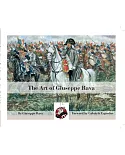Organized by El Museo del Barrio in New York to coincide with a major exhibition, this is the first comprehensive English-language publication on the fascinating legacy of Ta癒no art and
culture. Showcasing over one hundred rare and beautiful ceremonial and domestic artworks and individual masterpieces of this ancient culture -- produced in Puerto Rico, the Dominican Republic,
Cuba, Haiti, and the Bahamas between A.D. 1200 and 1500 -- Ta癒no includes examples of finely detailed and polished sculptures carved in wood, precious ornaments of shell and bone, and
ceramics decorated with animals, birds, and intricate geometric motifs. The contributors include ten of the foremost scholars of pre-Columbian culture and art, and an appendix features writings
from Spanish explorers who had contact with the Ta癒no.
Of Arawak descent, the Ta癒no -- whose ancestors migrated to the Caribbean from the Amazon Basin in South America during the sixth century -- were the first people encountered by Christopher
Columbus. Although they ceased to exist as an autonomous society within sixty years of the arrival of Spanish colonizers, the Ta癒no -- skilled agriculturists and navigators and accomplished
weavers, potters, and carvers -- developed a complex political, religious, and social system, and made a substantial contribution to the biological, cultural, and linguistic makeup of large
areas of the Caribbean. To this date, Caribbean communities in the Antilles and in New York and other large American cities exhibit the survival of Ta癒no practices in their worldviews,
religious beliefs, language, music, and food.





















